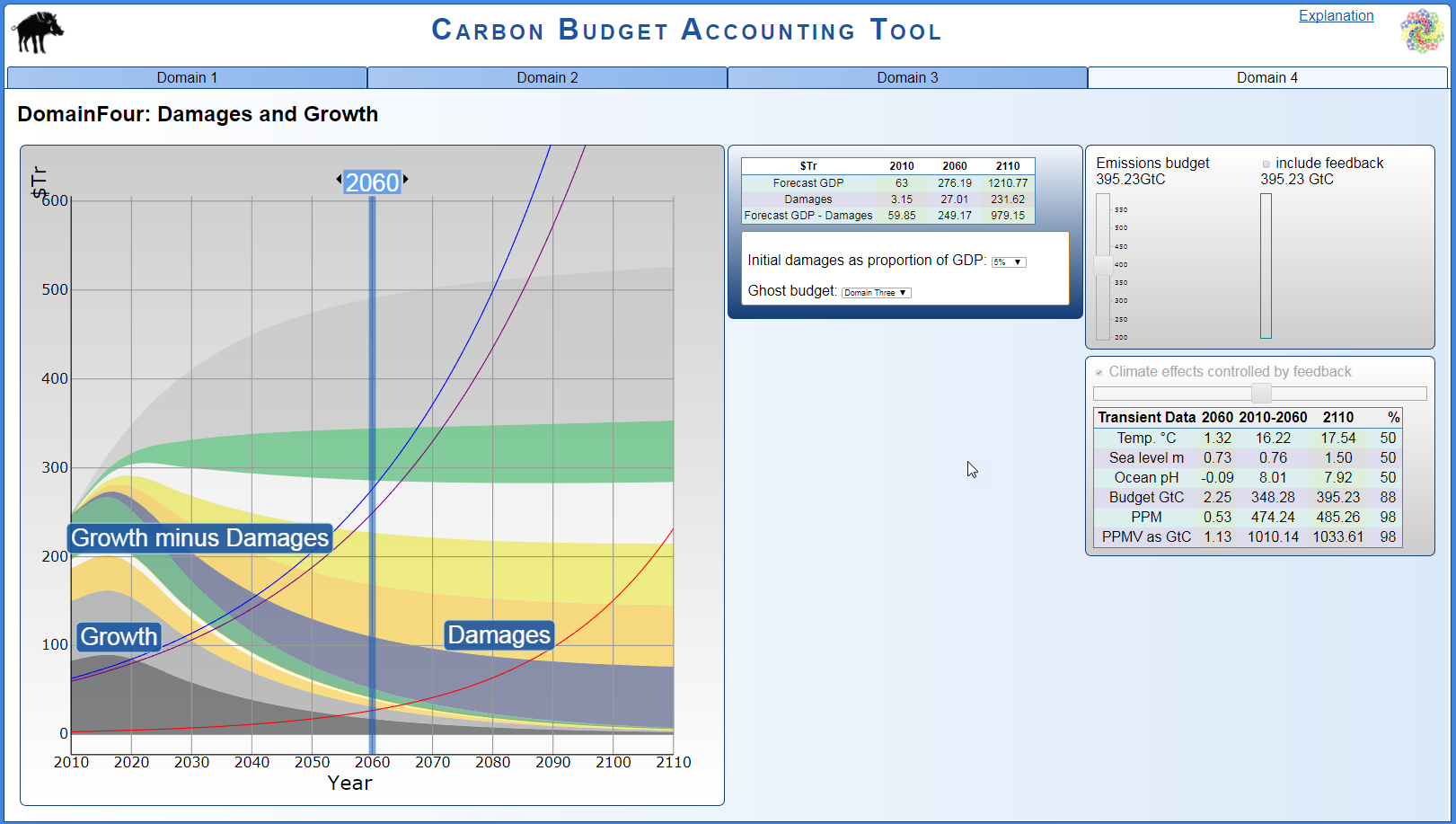The Carbon Budget Analysis Tool (CBAT)
Click logo to return to 'CBAT-general-page'
Here are the four 'domains' of CBAT where domains 2, 3 & 4 automatically pick up the user-selected carbon-budget emissions in domain 1.
On opening, the default setting is the contraction rate of global emissions - the global 'carbon-budget' - in the UK Climate Act.
It is 'cognitive-mapping', so the CBAT-user can increase or decrease this 'carbon-budget' and separately, the potential for the consequential change rates arising: -
- 'Domain One' - 'Contraction & Concentrations', with response arrays of 'climate feedbacks' & 'climate-effects' (temperature, sea level rise and ocean acidifcation)
- 'Domain Two' - 'Contraction and Convergence' where regional shares converge on the international per capita average arising
- 'Domain Three' - 'Contraction and Conversion' exploring the interactive rate at which fossil fuel consumption needs to be replaced with renewable sources
- 'Domain Four' - 'Climate Damages and Growth' exploring the rate of the climate-damage curves arising from different rates of carbon contraction
The basis of this analysis was adopted & publicly presented at UNFCCC COP-6 by CGNU in 2000
CBAT Appreciation is here.
*************************************************************************CBAT Domain Four - Damages & Growth Minus Damages (Click image to animate)
The size (integral-weight, rate and date) of the 'global carbon budget' in Domain 4 (as with all 4 CBAT Domains)
is the primary user control in this Domain (see slider in the panel top right-hand corner).
With a constant rate of global economic growth (here at 3%/year) the main point shown is that: -
- the smaller the budget, the lesser the full-earth-system-climate-damages will be
- the bigger the budget, the greater the full-earth-system-climate-damages will be
When the rate of climate damages is subtracted from that constant rate of global economic growth,
the main points shown are that: -
- the smaller the budget, the less the GDP rate is negatively affected
- the bigger the budget, the more the GDP rate is negatively affected
- the slower the damages, the less the GDP rate is negatively affected
- the faster the damages, the more the GDP rate is negatively affected
- before a certain damage rate, the GDP rate is negatively affected but remains net-positive
- beyond a certain damage rate, the GDP is negatively affected and goes net-negative
Other user-controls are: -
- the initial percent of damages as a proportion of GDP (choose from 1% to 10%)
- the 'Ghost budget' behind the GDP & damage curves (choose Domain Two (C&C) or Domain Three (fuels & renewables)
- these always respond in synch with the size of the carbon budget chosen in Domain Four
- the inclusion of climate feedback effects, which are significantly stronger when the carbon budget is larger
- the spot year is the solid vertical blue line in the main chart; it is 'draggable' between 2010 & 2110
- so the tables (lower right-hand panel) and center (upper mid panel)
always respond numerically to all the choice combinations made with the other controls.*************************************************************************
